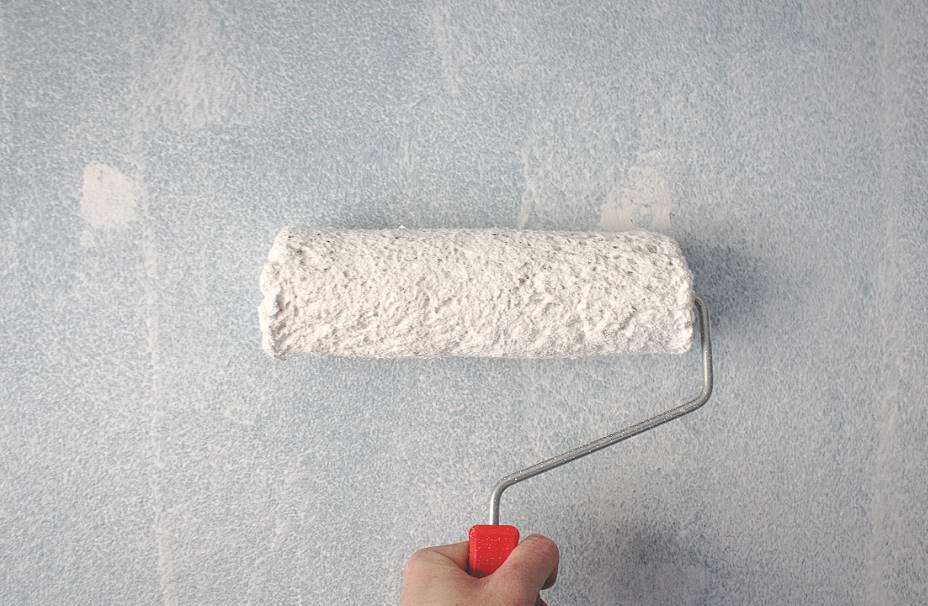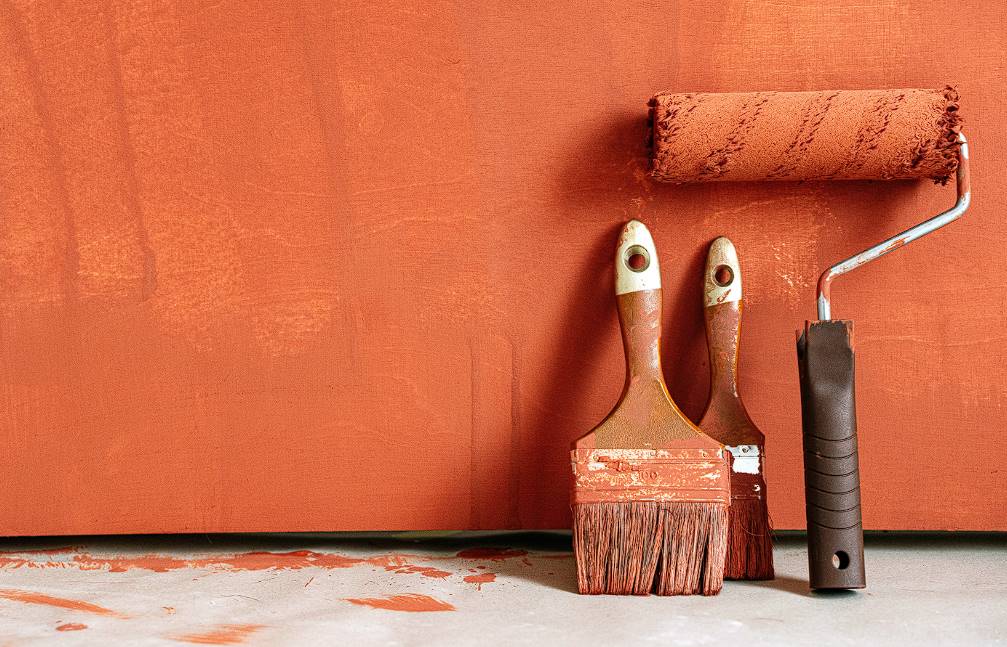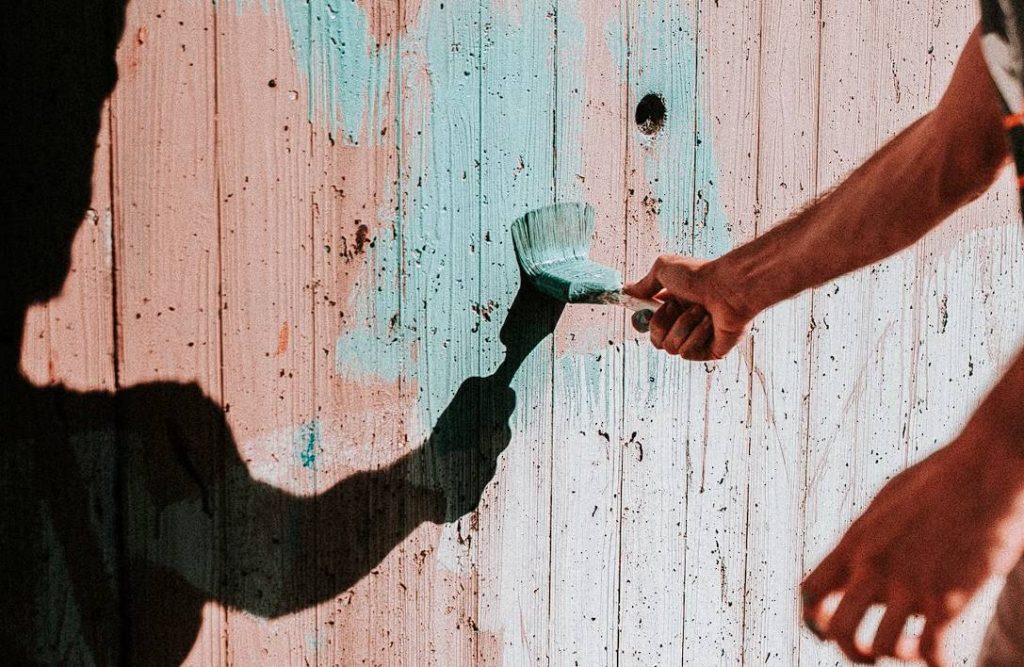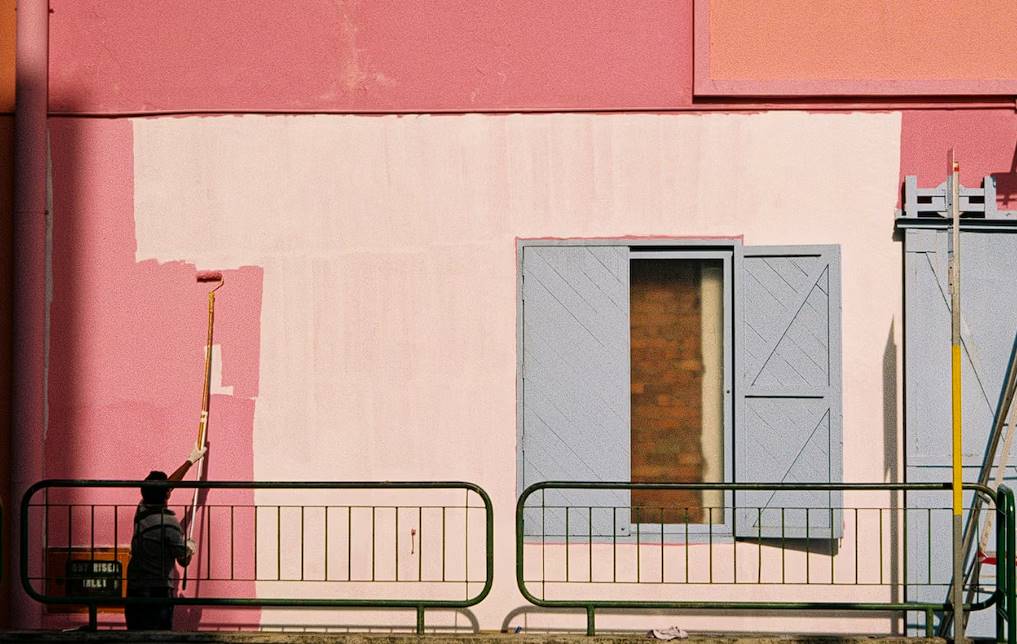Is there a particular reason why certain walls are glossy and smooth while others are textured and matte? Classifying paints according to their sheen provides the key. The paint's finish can affect its visual appeal, longevity, and adaptability to various substrates and settings.
The dried paint film's look and feel is known as the finish, and it's used to categorise paints into different types. Matte, eggshell, satin, semi-gloss, and gloss are the most frequently seen finishes. Each surface treatment has its unique qualities and applications. Matte finishes, for example, are unreflective and have a velvety look, making them great for concealing surface defects. In contrast, gloss finishes are bright and reflecting, making them more stain-resistant and simpler to clean.
There is a wide variety of paint finishes, and these are just a few examples. Our next post will go deeper into the classification of paints based on finish, examining each category's distinctive characteristics and uses.
Join us as we explore the intriguing world of paint finishes and learn how to produce amazing, long-lasting results if you've ever wondered how to get the ideal finish for your walls, furniture, or other surfaces. In our next article, we'll explain how paints are categorised according to finish, so stay tuned to take your painting skills to the next level.
Types Of Paints
The following criteria can be used to categorise paints:
- Their Function
- Binder or Medium
- Pigment Used
- Sheen
- Appearance
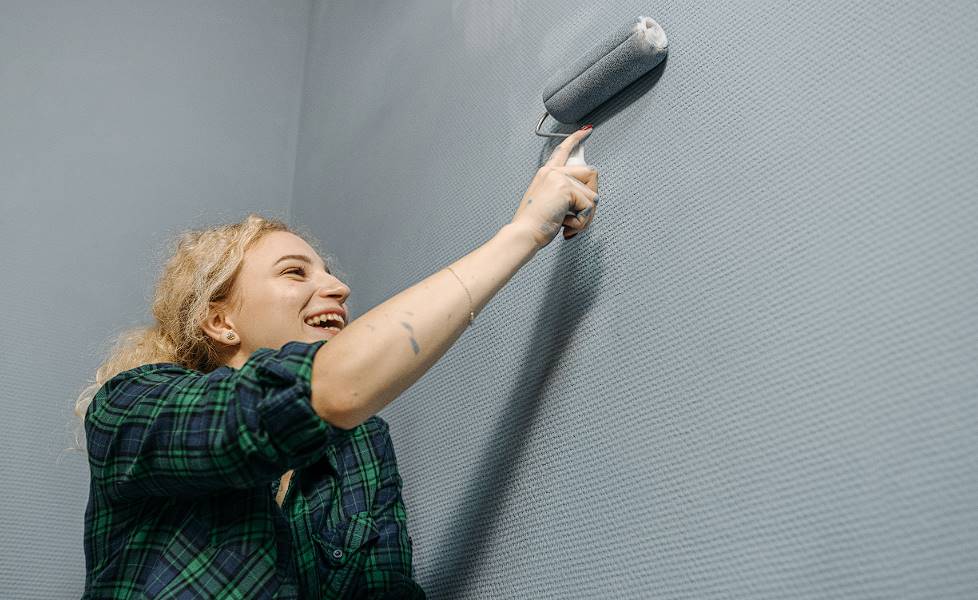
Based on Their Function
Primers or Undercoats
Use primers or undercoats to ensure a strong foundation for your paint job. These primer coats are like the magic sauce that makes for rock-solid adherence. By using them before painting, you can ensure your creation will last for years and still look great.
Finishing Coats
Do you wish to advance to the next level in your painting? The last coats are what you need. Incredibly smooth and sparkling results can be achieved with the help of these enchanted polishes. Goodbye, boring, and welcome, immaculate finish that makes your project stand out.
Sanding Sealer
Applying a sanding sealer will show your wood the TLC it deserves. This miraculous solution eliminates the appearance of pores and other undesired surface imperfections. If you want your woodworking project or piece of furniture to seem polished and professional, the sanding sealer is your best friend.
Floor Paint
You'll need paint that can withstand the abrasiveness of concrete or rough floors. The remedy to this problem is floor paint, which provides a tough and long-lasting coating. Floor paint, such as the excellent Urethane Oil-Based Paint, is the best option if you want to modernise your garage, basement, or outdoor areas.
Galvanized Iron Primer
Use a galvanised iron primer to protect your metal from rust and oxidation. This water-based, fast-drying coating forms an impenetrable shield against the weather, safeguarding your valuable metals. With this anti-corrosion miracle, metals will no longer rust and last much longer under your care.
Spray Paint
Spray paint is the answer to a brush-stroke-free finish. Using a spray gun to apply this great product guarantees a consistently even and flawless finish. Spray paint is the go-to medium for any artist wishing to quickly and easily achieve professional results, whether working on a do-it-yourself project or adding a splash of colour to their artwork.
Based on the Pigment Used
Zinc Rich or Zinc Dust Primer
Priming with zinc-rich or zinc dust will provide extra defence. Amazingly, these paints may be left exposed to temperatures as high as 550 degrees Celsius for extended periods without melting. They provide excellent protection against under-film corrosion attacks in addition to weathering and corrosion of your surfaces. Zinc Rich or Zinc Dust Primer will provide the ultimate defence for your projects.
White Lead Paints
Need a low-cost solution that nevertheless works? White Lead Paints is what you're seeking. They are not good for outside work since they may decolourise over time, making them ideal for traditional buildings. White lead paints are a cheap option for indoor work, but keep in mind that they don't offer corrosion protection.
Graphite Paint
Use Graphite Paint to unleash the strength of graphite. When it comes to coating metal, nobody does it better than this special blend of powdered graphite and oil. Graphite Paint is a durable coating that may preserve machinery, pipelines, and other metal surfaces while also giving them a stylish graphite appearance. Add some class to your work with Graphite Paint.
Red Lead Paints
Red lead paints are your best friend when protecting against corrosion. They create a thick, long-lasting anti-corrosion layer when combined with linseed oil. Red Lead Paints are long-lasting and great at preventing corrosion. Strengthen your endeavours so that they can last for a long period.
Micaceous Iron Oxide
Micaceous Iron Oxide can stop corrosion in its tracks on steel buildings. This high-quality paint has been developed to keep your steel protected. Its one-of-a-kind chemical makeup makes for an excellent defence against rust and decay. Protect yourself against rust with some Micaceous Iron Oxide.
Calcium Plumbate Primer
Calcium plumbaté primer is ideal for wood and metal construction applications. This multipurpose primer is perfect for painting a metal window frame with a hardwood outer frame. Calcium plumbago prime provides superior adhesion and protection for any wood, metal, or mix job.
Zinc Chromate
Zinc chromate can greatly increase the longevity of a surface. This potent paint does double duty as a corrosion inhibitor and durability booster for your surfaces. By using Zinc Chromate, you can keep your work safe from the effects of time. Zinc chromate's unparalleled durability will help your surfaces last longer.
Components Of Paints & Coatings
Have you ever pondered the process behind making the paint we use to decorate our homes or the varnish we use to protect our prized possessions? Paints and coatings are more than a haphazard smear of colour; they have painstakingly formulated works of art designed to last years and withstand the elements. But what, exactly, makes up these extraordinary substances?
Pigment
Paint can contain two kinds of pigment. First, there are the "prime" colours. These are used for both decoration and camouflage. Second, there are the inexpensive "extender" hues. They increase the product's overall size but offer no aesthetic benefit.
The prime pigments in higher-quality paints are more expensive, but they are also responsible for the paint's superior durability, longevity, and colour retention. Any solid component of a coating system is known as a pigment. They serve as the coating's colourant but also have additional uses. Some colours are antimicrobial, antifungal, or antibacterial, while others protect against rusting. Some are employed for conductivity; others are chosen for their feel or metallic or iridescent sheen.
Binders or Resins
A binder's primary purpose is to hold the substrate in place. A wide range of molecular weights are present in these polymer resin systems. During the curing process, the binder molecules crosslink to increase strength and form a thin film. Typically, a paint's binder determines what it's called. Binders are used in many different types of materials.
Modern paints employ several different types of binders. These paints are oil and latex. All-acrylic, styrene-acrylic, or vinyl-acrylic binders are used to make latex paints. Linseed oil, soy oil, or alkyds (a modified oil) are the main components of oil paints.
Binders have far-reaching effects, from adhesion and crack resistance to stain resistance and gloss. Paints with superior-quality binders have better adhesion to surfaces and film integrity. Due to this, they will be less likely to break, blister, or peel. Coating formulation binders are commonly blamed for paint's thick consistency. The coating's viscosity should be taken into account while deciding which application method to use.
Solvents or Liquids
Liquids are merely the "carrier" that facilitates the transfer of paint from the can to the surface, and they offer no functional advantages. High-quality paints, as one might expect, include more solids (pigment and binder) and less liquid. In contrast, low-cost paints tend to be more "watered down" with liquid. The four most prevalent coatings are;
- Solvent-based coatings
- Powder coatings
- Waterborne coatings
- High-solids coatings
The coatings are given names that indicate the primary carrier fluid used. Organic solvents and water are common examples of carrier fluids. Coatings can be sprayed or dipped because the carrier fluid helps the coating move around.
This ingredient might be part of the coating formula before application, but it evaporates afterwards, leaving only the immobilised solid elements that make up the thin protective film. The solvent, which is only present for a short time, significantly impacts the film's performance. Powder coatings comprise just the other three components and have no carrier fluid.
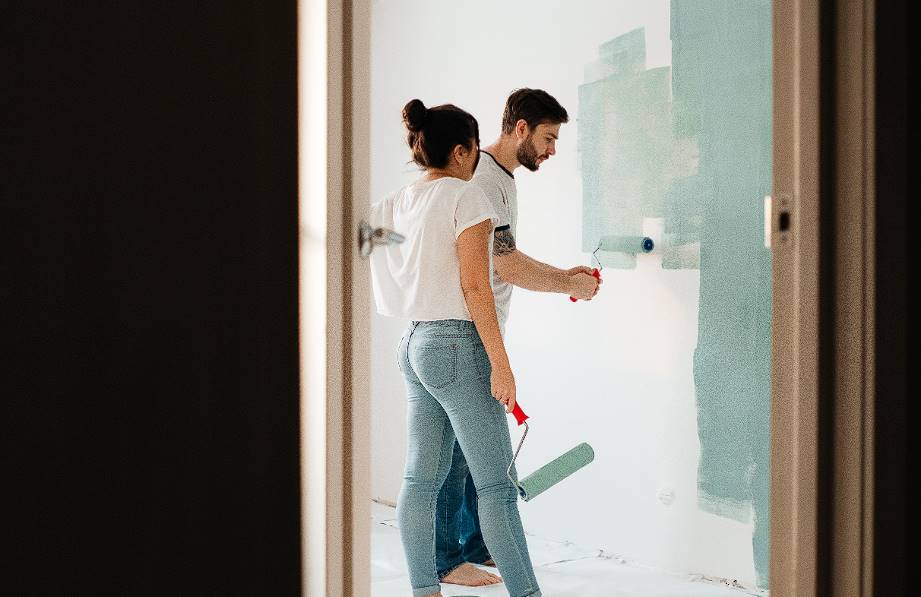
Choosing The Right Finish For Your Project
There are several things to consider when settling on a final coating for your work. The longevity, ease of care, and overall aesthetic of your finished product depend heavily on your chosen finish. Some essential considerations are as follows:
Type of Project
Think about the scope of your work. A floor, wall or a piece of furniture? It's important to choose the right finish for the right surface. A wooden floor and furniture may need different finishes to withstand the same amount of wear and tear.
Desired Appearance
Think about the overall look you're going for. Surfaces can be left in their transparent, natural state or coloured and opaque. Depending on the desired effect, a finish can either accentuate or disguise the material's inherent qualities.
Durability
Think about how much security your project actually requires. If it will be used frequently or outside, the finish should be able to withstand the elements without being damaged. A less robust coating may be adequate for some uses.
Application Method
Think about what you know and how you can apply it. Unlike oil-based finishes, which may be sprayed with a brush or cloth, spray lacquers require specialised equipment and skills. Pick a coating within your skill set that can be achieved with the materials.
Maintenance
Think about how much upkeep you want to put in. In order to preserve their usefulness and look, some finishes need to be reapplied or polished on a regular basis. Some things could be more low-key and need less-frequent care than others.
Environmental Impact
Take into account how the coating you choose will affect the planet. Certain coatings release harmful volatile organic compounds (VOCs) levels into the air. If this is an issue, you should seek out low-VOC or VOC-free alternatives.
Cost
Finally, consider your financial resources. Costs vary widely depending on the type of finish desired and whether or not a professional applies it. If you want tailored advice for your project, it's best to talk to people already knowledgeable in the industry. They can offer expert advice and point you toward the best possible conclusion.
Conclusion
Paints are classified according to their finish, which can affect their visual appeal, longevity, and adaptability to various substrates and settings. Matte, eggshell, satin, semi-gloss, and gloss are the most commonly seen finishes. There are a variety of paint finishes, such as matte, eggshell, satin, semi-gloss, and gloss, which have unique qualities and applications. Primers or undercoats are used to ensure a strong foundation for painting, finishing coats are used to achieve smooth and sparkling results, and sanding sealers are used to eliminate surface imperfections. Floor paint is used to withstand the abrasiveness of concrete or rough floors.
Floor paint, galvanised iron primer, spray paint, zinc-rich or zinc dust primer, white lead paints, graphite paint, red lead paints, and micaceous iron oxide are all options for protecting against corrosion. Floor paint provides a tough and long-lasting coating, galvanised iron primer protects metal from rust and oxidation, spray paint provides a brush-stroke-free finish, zinc-rich or zinc dust primer provides extra defence, white lead paints are low-cost, graphite paint is durable, red lead paints are long-lasting, and micaceous iron oxide can stop corrosion in its tracks on steel buildings. Micaceous Iron Oxide is an excellent defence against rust and decay. Calcium Plumbate Primer is ideal for wood and metal construction applications. Zinc Chromate is a corrosion inhibitor and durability booster for surfaces.
Paints and coatings are made up of two kinds of pigments: "prime" colours and "extender" hues. Binders or resins are used to hold the substrate in place. Modern paints employ several different types of binders, such as oil and latex. Binders are essential for paints to have better adhesion and film integrity. The four most prevalent coatings are solvent-based, powder coatings, waterborne coatings, and high-solids coatings.
Choosing the right finish for a project is important, as it affects the longevity, ease of care, and aesthetic of the finished product. Type of project is also important, as it affects the longevity, ease of care, and aesthetic of the finished product. The most important details are the desired appearance, durability, application method, maintenance, environmental impact, and cost. It is important to consider the desired appearance, durability, application method, maintenance, environmental impact, and cost when choosing a finish for a project. It is best to talk to experts in the industry for tailored advice.
Content Summary
- Paints can be classified based on their finish, which affects visual appeal, longevity, and adaptability.
- Matte finishes are unreflective and velvety, concealing surface defects.
- Gloss finishes are bright, reflecting, and stain-resistant, making them easier to clean.
- There are various paint finishes, including matte, eggshell, satin, semi-gloss, and gloss.
- Paint finishes have unique qualities and applications for different surfaces.
- The next post will explore the classification of paints based on finish in more detail.
- Primers or undercoats ensure a strong foundation for paint jobs, promoting adherence and longevity.
- Finishing coats provide smooth and sparkling results for an immaculate finish.
- Sanding sealer eliminates surface imperfections and gives wood a polished and professional look.
- Floor paint is durable and designed to withstand rough floors and outdoor areas.
- Galvanized iron primer protects metal from rust and oxidation.
- Spray paint provides a brush-stroke-free finish and is ideal for achieving professional results.
- Zinc-rich or zinc dust primers offer extra defense against high temperatures and corrosion attacks.
- White lead paints are cost-effective but not suitable for outdoor work.
- Graphite paint is a durable coating that preserves and gives a stylish appearance to metal surfaces.
- Red lead paints are excellent for corrosion protection and long-lasting results.
- Micaceous iron oxide prevents corrosion on steel buildings.
- Calcium plumbate primer is multipurpose and ideal for wood and metal construction applications.
- Zinc chromate increases the longevity of surfaces and acts as a corrosion inhibitor.
- Paints contain pigments that provide color, protection, and additional properties.
- Binders or resins hold the substrate in place and determine the type of paint.
- Different types of binders are used, such as all-acrylic, styrene-acrylic, or vinyl-acrylic for latex paints.
- Binders affect adhesion, crack resistance, stain resistance, and gloss in paints.
- Solvents or liquids act as carriers to facilitate the transfer of paint and affect the performance of the film.
- Different coatings use organic solvents, water, or have high solid content.
- The right finish depends on the type of project, desired appearance, durability, application method, maintenance, environmental impact, and cost.
- Choosing the right finish is crucial for longevity, ease of care, and overall aesthetic of the finished product.
- Consider the surface and its specific requirements when selecting a finish.
- Think about the desired look, whether transparent, natural, or colored and opaque.
- Factors such as durability, application method, maintenance, environmental impact, and cost should be taken into account when choosing a finish.
Frequently Asked Questions
Matte or flat finishes are generally better at hiding imperfections on walls. Their low sheen helps to minimize the appearance of bumps, cracks, and other surface flaws. However, it's important to note that very dark or intense colors may still highlight imperfections to some extent.
High-gloss finish paint has an extremely shiny and reflective surface. It provides a luxurious and polished look and is highly durable. High-gloss finishes are often used on surfaces like doors, furniture, and trim to create a bold statement.
Semi-gloss and gloss finish paints both have a high sheen, but semi-gloss has a slightly lower shine compared to gloss. Semi-gloss finishes are commonly used in bathrooms, kitchens, and areas prone to moisture, while gloss finishes are used for a more dramatic effect on surfaces like cabinets, furniture, or trim.
Yes, there are specialty paint finishes available that offer unique effects. Some examples include metallic finishes, textured finishes, chalkboard paint, and glow-in-the-dark paint. These finishes can add creativity and visual interest to surfaces.
Yes, you can apply a different finish on top of an existing painted surface. However, it's important to properly prepare the surface by cleaning it and ensuring it is smooth and free of any loose paint or debris. Applying a primer may also be necessary to ensure good adhesion between the layers.



